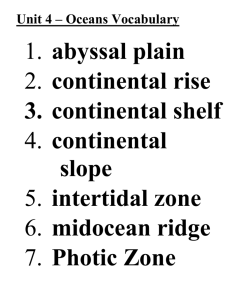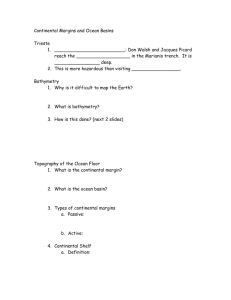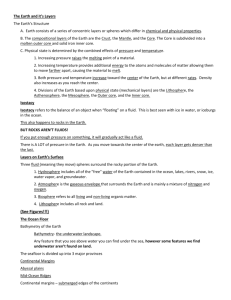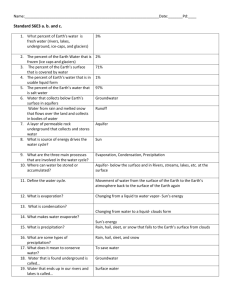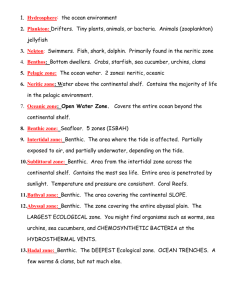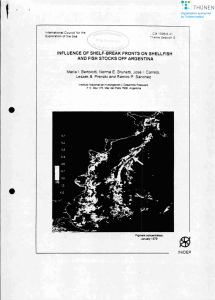CLIMA-bergamascoetal
advertisement
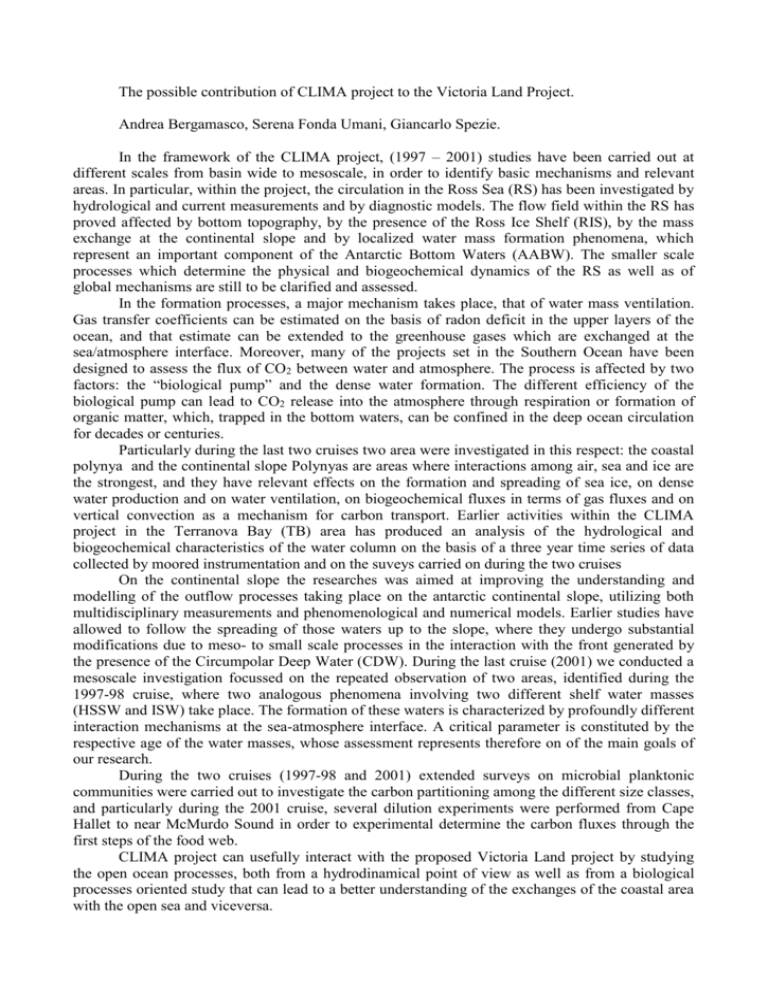
The possible contribution of CLIMA project to the Victoria Land Project. Andrea Bergamasco, Serena Fonda Umani, Giancarlo Spezie. In the framework of the CLIMA project, (1997 – 2001) studies have been carried out at different scales from basin wide to mesoscale, in order to identify basic mechanisms and relevant areas. In particular, within the project, the circulation in the Ross Sea (RS) has been investigated by hydrological and current measurements and by diagnostic models. The flow field within the RS has proved affected by bottom topography, by the presence of the Ross Ice Shelf (RIS), by the mass exchange at the continental slope and by localized water mass formation phenomena, which represent an important component of the Antarctic Bottom Waters (AABW). The smaller scale processes which determine the physical and biogeochemical dynamics of the RS as well as of global mechanisms are still to be clarified and assessed. In the formation processes, a major mechanism takes place, that of water mass ventilation. Gas transfer coefficients can be estimated on the basis of radon deficit in the upper layers of the ocean, and that estimate can be extended to the greenhouse gases which are exchanged at the sea/atmosphere interface. Moreover, many of the projects set in the Southern Ocean have been designed to assess the flux of CO2 between water and atmosphere. The process is affected by two factors: the “biological pump” and the dense water formation. The different efficiency of the biological pump can lead to CO2 release into the atmosphere through respiration or formation of organic matter, which, trapped in the bottom waters, can be confined in the deep ocean circulation for decades or centuries. Particularly during the last two cruises two area were investigated in this respect: the coastal polynya and the continental slope Polynyas are areas where interactions among air, sea and ice are the strongest, and they have relevant effects on the formation and spreading of sea ice, on dense water production and on water ventilation, on biogeochemical fluxes in terms of gas fluxes and on vertical convection as a mechanism for carbon transport. Earlier activities within the CLIMA project in the Terranova Bay (TB) area has produced an analysis of the hydrological and biogeochemical characteristics of the water column on the basis of a three year time series of data collected by moored instrumentation and on the suveys carried on during the two cruises On the continental slope the researches was aimed at improving the understanding and modelling of the outflow processes taking place on the antarctic continental slope, utilizing both multidisciplinary measurements and phenomenological and numerical models. Earlier studies have allowed to follow the spreading of those waters up to the slope, where they undergo substantial modifications due to meso- to small scale processes in the interaction with the front generated by the presence of the Circumpolar Deep Water (CDW). During the last cruise (2001) we conducted a mesoscale investigation focussed on the repeated observation of two areas, identified during the 1997-98 cruise, where two analogous phenomena involving two different shelf water masses (HSSW and ISW) take place. The formation of these waters is characterized by profoundly different interaction mechanisms at the sea-atmosphere interface. A critical parameter is constituted by the respective age of the water masses, whose assessment represents therefore on of the main goals of our research. During the two cruises (1997-98 and 2001) extended surveys on microbial planktonic communities were carried out to investigate the carbon partitioning among the different size classes, and particularly during the 2001 cruise, several dilution experiments were performed from Cape Hallet to near McMurdo Sound in order to experimental determine the carbon fluxes through the first steps of the food web. CLIMA project can usefully interact with the proposed Victoria Land project by studying the open ocean processes, both from a hydrodinamical point of view as well as from a biological processes oriented study that can lead to a better understanding of the exchanges of the coastal area with the open sea and viceversa.


